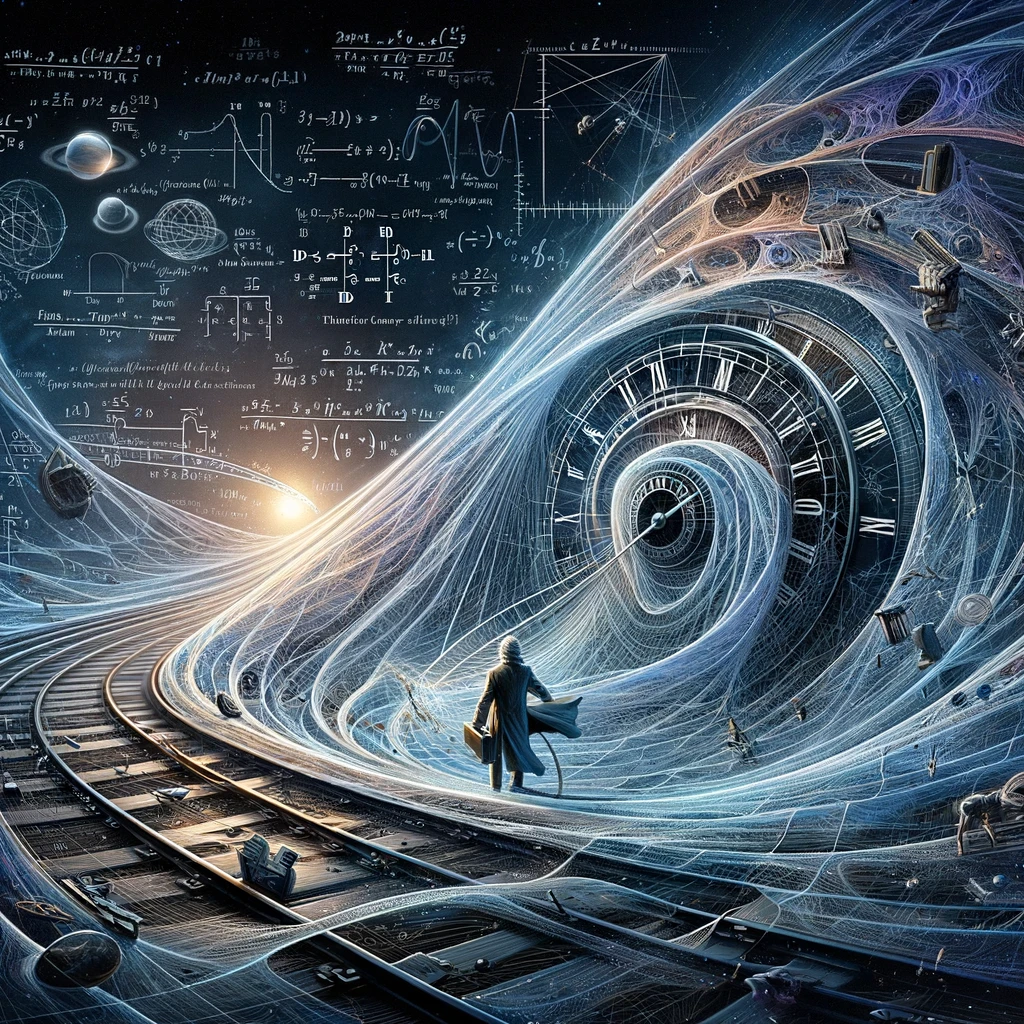In the theoretical physics realm, Germain Tobar, a student from the University of Queensland, Australia, has sparked new debates about the feasibility of time travel with his groundbreaking study. Under the supervision of physicist Fabio Costa, Tobar’s research offers a vision of time travel existing without the notorious paradoxes that have long baffled scientists and sci-fi enthusiasts.
Science fiction has often featured the concept of time travel, with classics like “Back to the Future” and the complex narratives of “Donnie Darko” grappling with the ‘grandfather paradox.‘ This paradox presents a time traveler potentially preventing their own existence by changing past events. Tobar, however, proposes a novel solution to this paradox.
Tobar identifies the key in understanding space-time dynamics as Einstein’s theory of general relativity predicts. This theory allows time loops, where an event can exist in both the past and future. Tobar’s calculations indicate that space-time could inherently adjust to avoid paradoxes.
For example, if a time traveler went back to stop a disease outbreak, Tobar’s theory suggests the disease might still occur through a different path, thus maintaining the timeline and removing the paradox. This idea challenges the traditional view of time travel, suggesting that while travelers can act freely, their actions won’t create inconsistencies in history.
This concept introduces a fascinating twist to the traditional narrative of time travel. Traditionally, time travel has seemed like a linear progression where past actions could directly change the future. This view has always carried the risk of paradoxes, like the ‘grandfather paradox.’ Tobar’s research, however, suggests a more complex and dynamic time travel model, where space-time inherently self-corrects. In this model, time travelers have the freedom to act in the past, but these actions don’t necessarily lead to direct, linear changes in the future. Instead, the universe seems to have a mechanism that inherently prevents these paradoxes.
Imagine space-time as a complex network that can stretch, bend, and twist in response to a time traveler’s actions. However, no matter how one manipulates it, this fabric always returns to a consistent state, ensuring history remains intact. This means if a time traveler changes a past event, the universe adjusts to keep the overall timeline unaltered.
For instance, if a time traveler tries to prevent a significant historical event, the universe might compensate by allowing a similar event to happen through a different sequence of events. This compensatory mechanism ensures the essential outcomes of history remain unchanged, thus preserving timeline consistency.
This revolutionary perspective redefines time travel’s boundaries and implications. It suggests time travelers could interact with the past without fearing to erase themselves or cause irreparable damage to the timeline. However, it also implies a certain predestination or predetermined nature of major historical events, indicating that while small details might change, the overall arc of history remains constant.
Therefore, Tobar’s theory not only resolves the long-standing paradoxes associated with time travel but also opens up new possibilities for understanding space-time fabric and our universe’s nature. While this concept remains theoretical, its implications for physics, philosophy, and our reality understanding are profound and far-reaching.
This revolutionary idea builds on previous theories that proposed restrictions on time travelers to prevent paradoxes. Tobar’s model, however, allows complete freedom of action, with the universe itself correcting any potential inconsistencies.
While Tobar’s work, supported by Costa, aligns mathematically, practically applying time travel remains a distant reality. Our current understanding and technology confine time travel to theoretical models and complex calculations. But the possibility remains tantalizing, especially considering Stephen Hawking’s belief in time travel’s potential.
This research not only challenges our understanding of time and space but also opens up new possibilities for future studies. As Costa says, no matter how hard one tries to create a paradox, the universe seems to have a way of readjusting itself to maintain consistency. This finding suggests that time travel, once a fiction realm concept, might be a plausible reality in our universe, free from paradoxical impossibility constraints.



